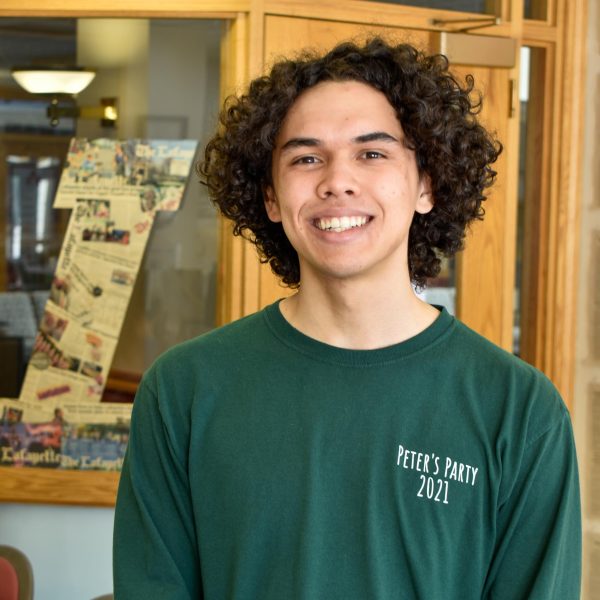The COVID-19 pandemic is far from the first outbreak that Lafayette has faced throughout its history. How the College and the Lehigh Valley handled this pandemic and all pandemics past has been recorded and archived by both the College Archivist, Elaine Stomber, and the Northampton County Historical and Genealogical Society, headquartered on Northampton Street. From the early twentieth century to now, The Lafayette chronicled three of the biggest outbreaks that preceded COVID-19.
Spanish Influenza
One of the first recorded pandemics during Lafayette’s history is the Spanish Flu. At the time of its arrival in Easton, Lafayette College was transformed into a military training camp, called Camp Lafayette, expediting the disease’s transmission by returning soldiers. By Armistice Day, Easton was seeing up to 450 deaths per month, according to an unknown newspaper in 1918 from the Northampton County Historical and Genealogical Society.
In 1976, Jim Shelley of the Morning Call found in Easton’s Historical Society records, reflecting upon the Spanish Flu pandemic, reported that Easton’s theaters, dance halls and saloons were shuttered and prisons quarantined, with local health authorities later falsely proclaiming the disease “had run its course.”
After this proclamation, the Easton Transit Company’s trolley services went on hold for over two dozen workers who had caught the flu. Doctors began prescribing whiskey to those afflicted by the illness, but these prescriptions did not slow down the disease. Prisoners eventually had to fill in for sick gravediggers and there was a shortage of coffins. Easton was thrown into disarray.
With at least four Lafayette students, including two soldiers, succumbing to the disease as it ravaged the region, the Phi Gamma Delta and Delta Upsilon fraternity houses were converted into temporary hospitals, where a further five Easton residents died, according to The Biography of a College. Additionally, Founders’ Day was cancelled, football games were either called off or postponed, and The Lafayette ceased publication, only returning for a single issue in December of 1918 as Camp Lafayette, commissioned to document the chaotic semester.
By the end of 1919, Easton’s Spanish flu crisis was eradicated and the College returned to normal operations.
HIV/AIDS
Diseases such as polio and cholera had terrorized parts of the nation throughout the 20th century, no disease since the Spanish Flu instilled as much fear as HIV and AIDS had, which still has no cure.
First discovered in the early 1980s, HIV/AIDS was initially associated with gay sex and drugs that utilized needles, sparking a wave of homophobia that Lafayette was not immune from. One of the first recorded mentions of AIDS at Lafayette College was in a “Leo the Leopard” satirical segment of the March 30, 1984 issue of The Lafayette, wherein “Leo” explains his absence from the paper as not due to AIDS.
Lafayette was slow to implement policy to combat HIV/AIDS beyond running educational pieces in The Lafayette starting in 1985. In 1988, students at the College formed Lafayette AIDS Outreach, a group dedicated to raising awareness “of the health and social problems associated with AIDS,” according to The Lafayette. Despite this group’s formation, some students felt that “victims [of HIV/AIDS] face the harsh opinions of their peers and possible social ostracism.”
“Risky behavior includes intercourse without… a condom, having multiple life partners, having slept with a prostitute, sharing needles for ‘street drugs’ or steroids, and having homosexual relations or anal intercourse,” Alan Johnson, past Director of Bailey Health Center said in 1989.
Kendall Berry ’15 further argued in a paper for her WGS 340 class that The Lafayette itself “used its medium to discourage college students from sexual intercourse and subliminally place guilt on those who participated in such activities,” citing multiple issues of the paper from the ’80s and ’90s.
The Lafayette did begin raising awareness about the usage of condoms in 1990 and the College implemented a policy in 1990 mandating that RA’s provide free condoms, despite objections from some students.
H1N1 (Swine Flu)
The most recent global pandemic, H1N1, better known as Swine Flu, swept the area in 2009. The campus physician, Jeffrey Goldstein, who had joined Lafayette nine years prior, announced in April of 2009 that the College had “purchased a stockpile of Tamiflu” to help combat the virus in the event of an on-campus outbreak. A form of contact tracing similar to the one currently in place was also implemented, with other recommendations from Goldstein calling for handwashing, usage of masks by those treating patients, and self-quarantining for those who came in contact with the virus.
At the beginning of the fall 2009 semester, Goldstein further advocated for relaxing “the tight rules in regard to excuses” so that students could more easily self-isolate, going so far as to suggest that infected students leave campus, according to The Lafayette; this was prior to the advent of remote learning. Despite Bailey Health Center having ordered 3,000 H1N1 vaccines in October, supplies were limited, and 192 students had tested positive by the end of that month. Half of the swim team had the Swine flu at one point, causing the team to fall behind in the 2009 season.
The front page of The Lafayette on November 6, 2009, featured a student donning a medical mask, foreshadowing what was to come just eleven years later.






































































































